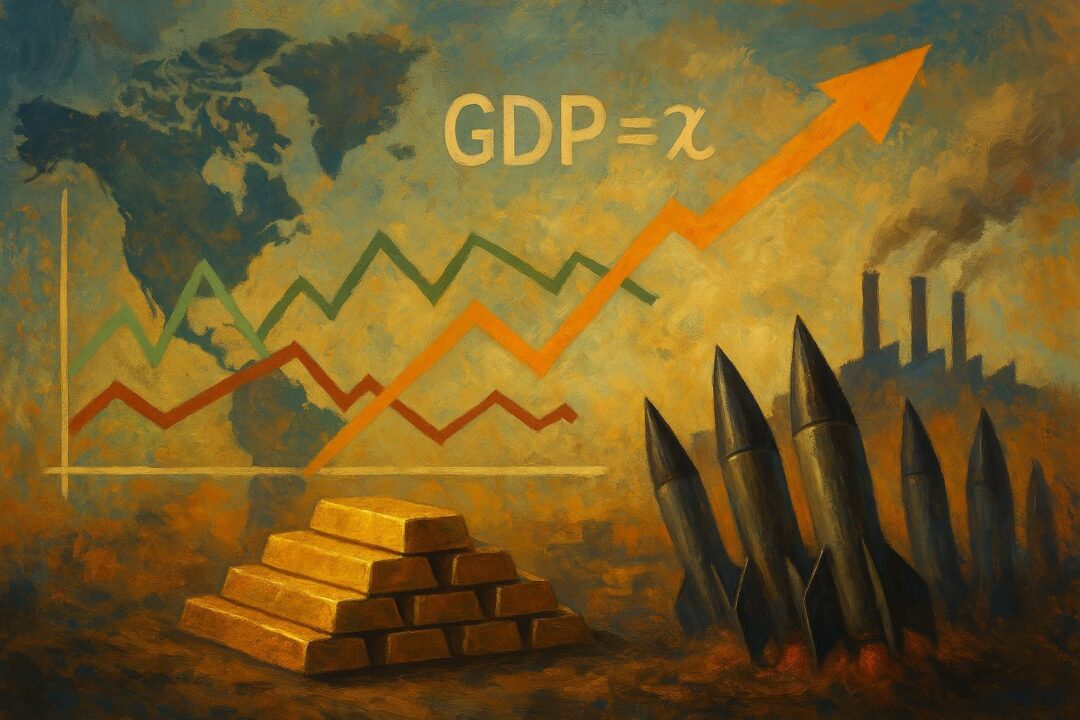Imagine judging modern global influence with a Cold War-era map. That’s essentially what we’re doing with the U.S. Dollar Index (DXY). For decades, this index has shaped how we perceive the strength of the dollar — in markets, policy decisions, and media narratives. But while the world has shifted dramatically since the 1970s, the DXY has barely budged. It still clings to an outdated formula, blind to the rise of new economic powers, new trading partners, and new threats to fiat currencies.
The world has evolved. The dollar index hasn’t. Here’s why the DXY is broken — and what a modern replacement could look like.
Why the DXY Has Its Current Weightings
The DXY was created in 1973 by the U.S. Federal Reserve, just after the collapse of the Bretton Woods system. At the time, it was designed to measure the dollar’s value against a basket of the U.S.’s most important trading partners. The weightings were based on trade volume and currency convertibility — a snapshot of the post–World War II Western-centric economy.
Here’s how the current weighting came to be:
- Euro (57.6%) – This is a consolidation of several European currencies (including the German Deutsche Mark and French Franc) that were part of the original basket before the euro was introduced in 1999.
- Japanese Yen (13.6%) – Japan was one of the U.S.’s largest post-war trading partners and remains a financial powerhouse.
- British Pound (11.9%) – The UK’s longstanding economic ties with the U.S. warranted a strong inclusion.
- Canadian Dollar (9.1%) – As the U.S.’s neighbor and key trade partner, Canada’s currency naturally plays a role.
- Swedish Krona (4.2%) and Swiss Franc (3.6%) – Smaller economies with stable, freely traded currencies that helped round out the basket.
Importantly, these weightings have never been updated to reflect the global trade reality of the 21st century. Countries like China, India, Brazil, and South Korea — all top U.S. trade partners — remain completely unaccounted for. The index is static in a dynamic world.
1. The DXY Ignores Major Global Economic Powers
The index currently includes just six currencies — and none from the BRICS nations, despite their massive growth in global economic influence:
- China, the second-largest economy in the world and a top U.S. trade partner, is completely absent. So is the Chinese Yuan (CNY), despite its increasing use in international reserves and cross-border settlements.
- India, Brazil, and Russia also go unrepresented, yet collectively contribute a growing share to global trade and energy markets.
By omitting these currencies, the DXY fails to reflect the dollar’s performance relative to some of the world’s most important and fastest-growing economies.
2. The Euro Is Overweighted
The euro alone accounts for 57.6% of the index — a relic of a pre-2000 world when multiple European currencies were absorbed into the euro. While the Eurozone remains important, this overweighting means the index often reflects fluctuations in EUR/USD more than it reflects the dollar’s true, broad-based strength. This distorts monetary policy signals, market analysis, and global investment decisions.
3. The Absence of Gold Is a Glaring Omission
Gold, though not a fiat currency, is one of the oldest and most trusted stores of value. In times of inflation, geopolitical stress, or monetary debasement, gold often serves as a proxy for the dollar’s real purchasing power. Excluding it from the index means ignoring a crucial benchmark against which the dollar is frequently judged — especially by institutional investors and central banks.
4. A Modern Index Should Reflect Trade and Capital Flows
The DXY was never intended to measure purchasing power parity, trade-weighted value, or financial exposure. It simply tracked performance against a limited group of currencies. Today, with global trade networks far more complex and capital markets deeply interconnected, any meaningful index of dollar strength must:
- Be trade-weighted, reflecting actual U.S. imports and exports.
- Include emerging market currencies, especially the Yuan, Rupee, and Brazilian Real.
- Factor in commodity benchmarks, particularly gold, to account for the erosion of fiat value.
5. Call to Action: Time for a New Index
It’s no longer sufficient to tweak weights or add one or two currencies. We need a modernized U.S. Dollar Strength Index (USDSI) — one that includes:
- A wider and more dynamic basket of at least 15–20 currencies.
- A floating weighting mechanism based on rolling trade and capital flow data.
- A commodities component, with gold (and potentially oil) as anchors of real-world value.
Conclusion
The DXY today is like using a 1970s road map to navigate a 2025 global economy. It distorts more than it reveals and serves more as a historical artifact than a functional indicator. With the rise of new powers, alternative monetary systems, and gold reasserting itself as a check on fiat excess, it’s time for a smarter, broader, and more realistic way to measure the dollar’s true strength. Redesigning the dollar index isn’t just overdue — it’s essential.
Bonus: The DXY Ignores the Financial Plumbing Behind the Dollar
Beyond trade, the real strength of the dollar comes from its role as the world’s reserve currency and the backbone of global funding markets. The DXY ignores many of these deeper systems:
- Quantitative Easing (QE): When the Fed prints money to buy assets, it affects global rates and liquidity. But unless other central banks are doing something different, the DXY doesn’t fully reflect this shift.
- Swap Lines: During crises, the Fed lends dollars to foreign central banks to prevent liquidity crunches. This temporarily increases global dollar supply but isn’t visible in the DXY — even though it stabilizes the system.
- Repo Markets: These are essential to short-term dollar funding. Stress here can signal a shortage of dollars globally — pushing the DXY higher even if the U.S. economy is weak.
- Eurodollar System: Trillions in U.S. dollar obligations exist offshore. When those markets tighten, global demand for dollars spikes, often strengthening the DXY. But this demand isn’t driven by trade — it’s driven by debt and liquidity needs outside U.S. borders.
These mechanisms reveal how the DXY is just the tip of the iceberg. The true story of dollar strength is playing out beneath the surface, in the plumbing of the global financial system.
Discover more from Brin Wilson...
Subscribe to get the latest posts sent to your email.



